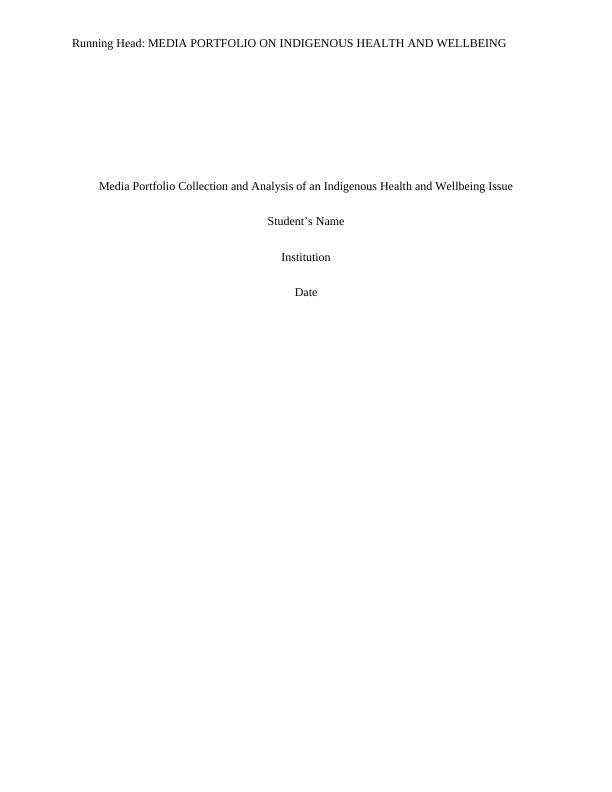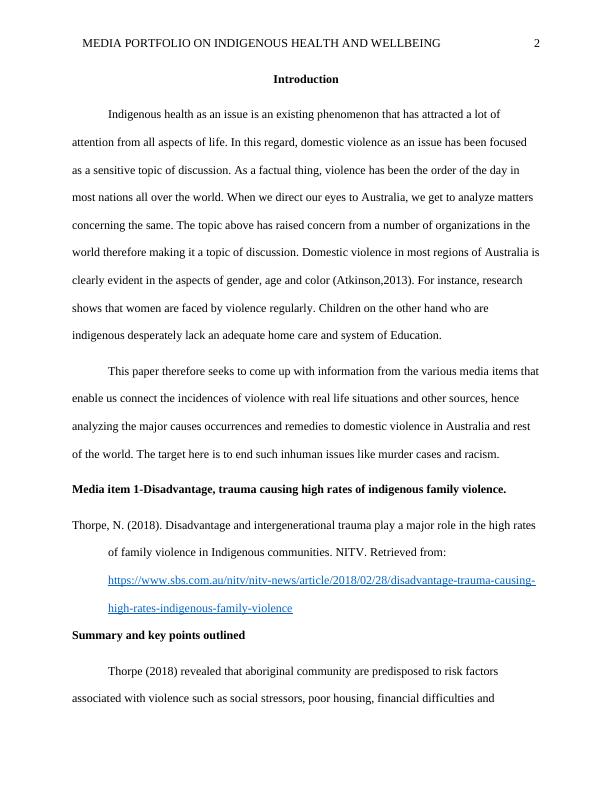Media Portfolio Collection and Analysis of an Indigenous Health and Wellbeing Issue
16 Pages4044 Words336 Views
Added on 2023-06-05
About This Document
This media portfolio analyzes the issue of Indigenous Health and Wellbeing, focusing on the root causes of domestic violence, alcohol abuse, and trauma among Aboriginal communities in Australia and beyond. The analysis draws on various media items to explore the issue and link it to model approaches and current affairs. The article also includes personal reflections on the issue.
Media Portfolio Collection and Analysis of an Indigenous Health and Wellbeing Issue
Added on 2023-06-05
ShareRelated Documents
End of preview
Want to access all the pages? Upload your documents or become a member.
Intergenerational Trauma in Indigenous Australians Essay 2022
|7
|2246
|24
Intergenerational Trauma Assignment Report
|7
|2089
|12
Sample Assignment on Trauma PDF
|14
|3459
|24
Intergenerational Trauma and Its Effects on Indigenous Australians
|9
|2074
|188
(PDF) Violence against women
|9
|3211
|223
Assignment on Impact of Racism on Indigenous Australians
|18
|4528
|99




